Are you looking for the best or right camera for photography? Well, choosing the right camera can make or destroy your photography. The wrong choice means you’ll be left with blurry photos and a broken ego. So, we’ve spent countless hours to find out the best camera for photography.
There are many different types of cameras available on the market today, including action cameras, DSLRs and mirrorless cameras. Each type has its advantages and disadvantages, so it’s important to understand them before making your choice.
Photography is either the best hobby or career of the 21st century. If you have been following photography, you know how much art and creativity are involved here. There are many top cameras out there that are made especially for photographers. These cameras come with many special features that can really help you in your work as a photographer. So let’s take a look at some of these top 10 cameras for photography!
Top 10 Cameras for Photography
The best camera for photography is one that you can take with you anywhere without having to worry about it breaking or being too heavy to carry around. The best camera for photography should be easy-to-use and have a good-quality lens.
These are the top 10 cameras for photography in the US, and they each have their own unique features. The best camera for you may depend on how much you want to spend, what features you want, and what’s available in your price range.
Let’s dive in!
- Sony A7 IV

| Specifications | |
| Sensor size | Full-frame |
| Resolution | 33MP |
| Viewfinder | 3690K dots |
| Monitor | 3.0-inch vari-angle touchscreen |
| Autofocus | 759-point AF |
| Movies | 4K at 60p |
| Maximum continuous shooting rate | 10fps |
| User level | Intermediate |
Here are the pros and cons of the Sony A7 IV:
Pros
- Vari-angle screen
- Impressive 33MP sensor
- Class-leading autofocus
Cons
- Complex for beginners
- Heavily cropped 4K footage
The Sony A7 IV is the latest iteration of the company’s flagship full-frame mirrorless camera. It also features a new autofocus system called “DPAF” that promises faster and more accurate focusing than previous models. It has a built-in EVF, which can be used to compose shots without having to use the screen on the back of the camera.
While it’s not quite as powerful as its main competition from Nikon or Canon, the A7 IV offers some unique features that make it well worth considering if you’re looking for a high-end mirrorless system.
2. Canon EOS R6
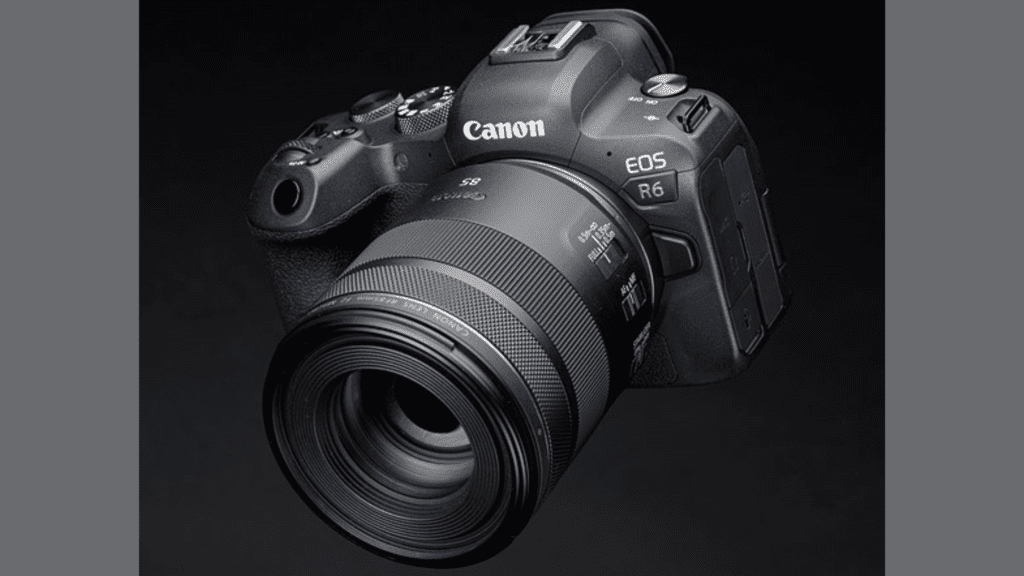
| Specifications | |
| Sensor size | Full-frame |
| Resolution | 20.1 MP |
| Viewfinder | 3690K dots |
| Monitor | 3.0-inch tilt-angle touchscreen |
| Autofocus | 6072-point AF |
| Movies | 4K at 60p |
| Maximum continuous shooting rate | 12fps |
| User level | Professional |
Here are the pros and cons of Canon EOS R6:
Pros
- Dual card slots
- Class leading autofocus
- Outstanding full-frame IBIS
Cons
- 20MP resolution
- Video recording limits
Canon EOS R6 is a camera that can take amazing pictures. It has a great sensor, and it’s super fast. It may not be the best for video, but it’s still good enough for most people. It’s the first to use a full-frame sensor, and it’s also the first to be compatible with EF lenses.
It has great build quality and feels like a true professional-grade camera. The 10-bit 4K video recording capabilities are fantastic, but we think the autofocus is a little off in low-light situations.
The Canon EOS R6 also features built-in Wi-Fi with NFC and Bluetooth technology, allowing you to easily transfer photos from the camera to your smartphone or tablet when connected via Wi-Fi or NFC.
3. Nikon Z6 II
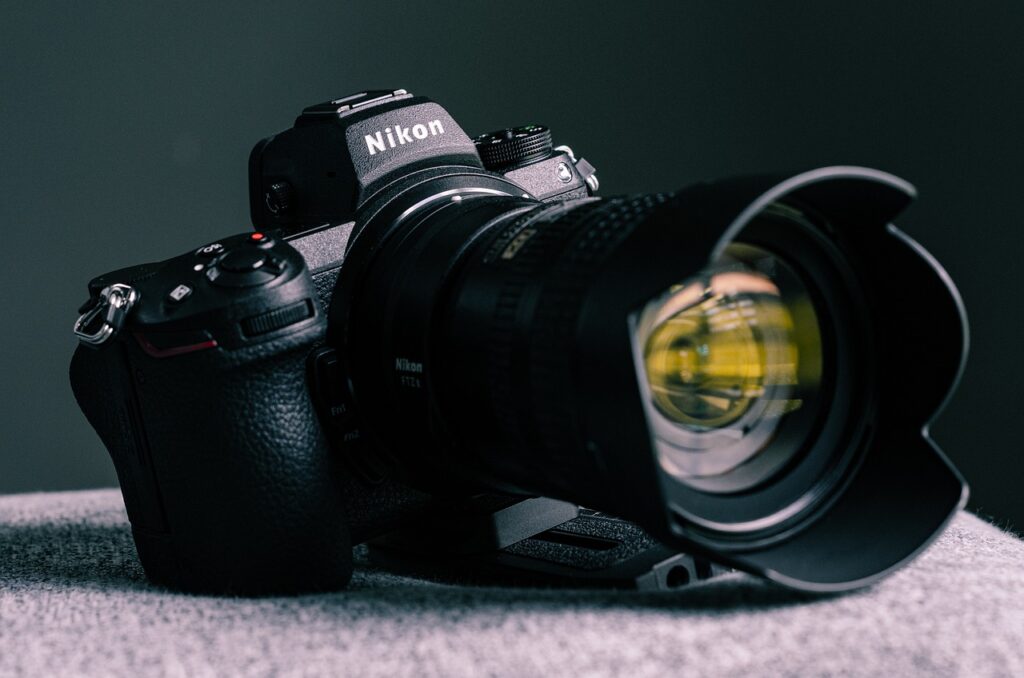
| Specifications | |
| Sensor size | Full-frame |
| Resolution | 24.5MP |
| Viewfinder | 3690K dots |
| Monitor | 3.2-inch tilt-angle touchscreen |
| Autofocus | 273-point hybrid AF |
| Movies | 4K at 30p |
| Maximum continuous shooting rate | 14fps |
| User level | Intermediate |
Here are the pros and cons of the Nikon Z6 II:
Pros
- Great handling
- Outstanding image quality
Cons
- The screen isn’t vari-angle
- Not advanced AF
Nikon Z6 II is a full-frame mirrorless camera with an APS-C-sized sensor. It has the same sensor as the Nikon Z6 but without the optical low-pass filter. It has a new autofocus system and a slightly different composition of controls on its rear.
The Z6 II has a smaller sensor, so it has less resolution than the Z6. However, if you’re shooting with a full-frame camera and want to keep your depth of field shallow, you can use the f/1.2 aperture lens on the Z6 II.
4. Sony A7R IV

| Specifications | |
| Sensor size | Full-frame |
| Resolution | 61MP |
| Viewfinder | 5760K dots |
| Monitor | 3-inch tilt-angle touchscreen |
| Autofocus | 567 PDAF |
| Movies | 4K at 30p |
| Maximum continuous shooting rate | 10fps |
| User level | Expert |
Here are the pros and cons of the Sony A7R IV:
Pros
- Brilliant viewfinder
- Fast and intelligent AF
- Enhanced ergonomics
Cons
- No in-camera RAW processing
- Rolling shutter perceptible in videos
The Sony A7R IV is a mirrorless full-frame camera that is the successor to the A7R III, which was released in March 2019. The A7R II had been one of Sony’s best-selling cameras for two years until it was discontinued in April 2018.
The Sony Alpha 7R IV is a very different beast from its predecessors, though. It’s larger, heavier and more expensive than either of those previous cameras. It has an electronic viewfinder that gives you better exposure information than your eye alone.
5. Fujifilm X-H2
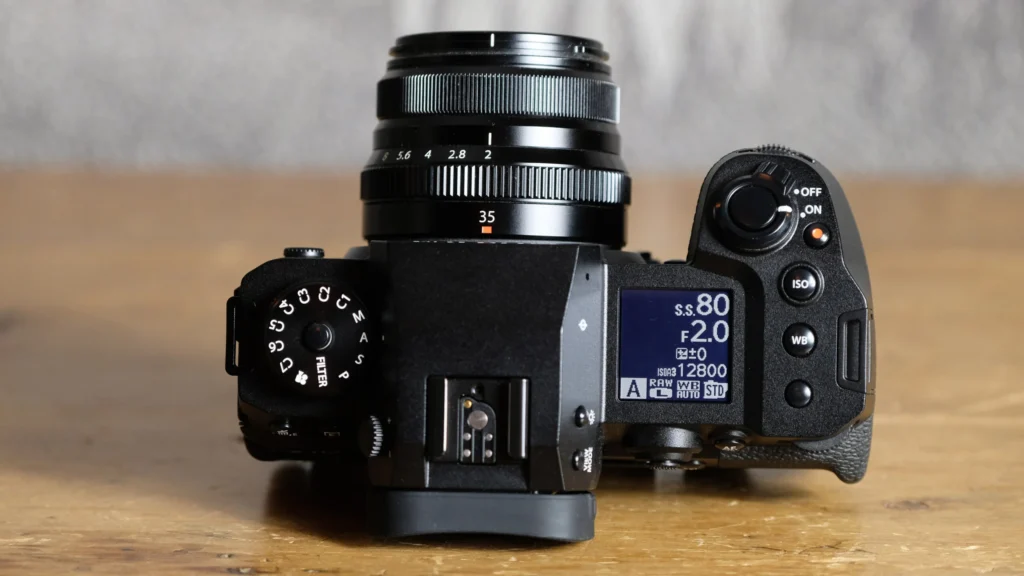
| Specifications | |
| Sensor size | APS-C |
| Resolution | 40MP |
| Viewfinder | 5760K dots |
| Monitor | 3.0-inch tilt angle touchscreen |
| Autofocus | 425-point AF |
| Movies | 8K/30p |
| Maximum continuous shooting rate | 15fps |
| User level | Advanced |
Here are the pros and cons of Fujifilm X-H2:
Pros
- Superb, high-resolution stills
- Cheaper than full-frame rivals
- 8K video with lengthy record times
Cons
- Not as fast as X-H2S
The Fujifilm X-H2 is a small, lightweight mirrorless camera with a high dynamic range sensor. The X-H2 is the successor to the X-T2, which was discontinued in early 2019 and has been upgraded with several new features and improvements.
The X-H2 features a new hybrid autofocus system that combines phase detection and contrast detection technologies to provide excellent performance in low-light conditions.
6. Canon EOS 90D
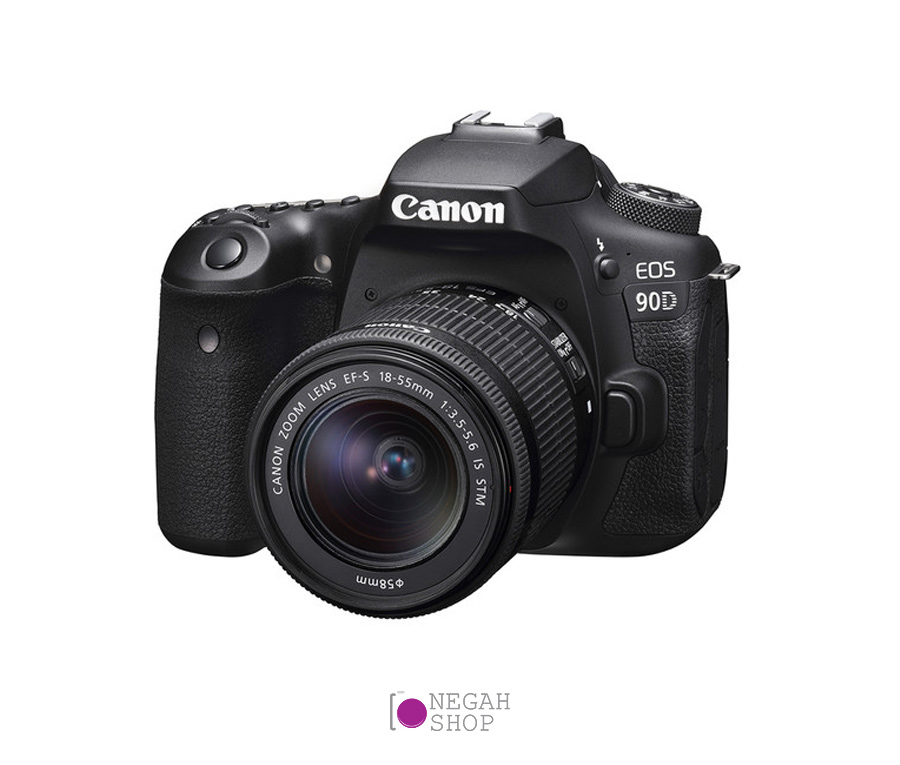
| Specifications | |
| Sensor size | APS-C |
| Resolution | 32.5MP |
| Viewfinder | Pentaprism |
| Monitor | 3.0-inch touch |
| Movies | 4K |
| Maximum continuous shooting rate | 10fps |
| User level | Enthusiast |
Here are the pros and cons of Canon EOS 90D:
Pros
- Incredible value
- Wholly articulated touchscreen
Cons
- Unimposing buffer capacity
- Pixel count causes noise problems
The Canon EOS 90D is a digital single-lens reflex camera (DSLR) that was announced by Canon on October 23, 2014. The camera features a built-in touchscreen LCD shutter release unit which can be used to take photos using touch operation.
The EOS 90D also features an intuitive Live View shooting mode that allows you to compose your images on the LCD screen and preview them using simple touch controls. This can be useful when framing shots in live view mode or when shooting in dark conditions where a viewfinder is not available.
7. Nikon D3500

| Specifications | |
| Sensor size | APS-C CMOS |
| Resolution | 24.2MP |
| Viewfinder | Optical |
| Monitor | 3-inch |
| Movies | 1080p |
| Maximum continuous shooting rate | 5fps |
| User level | Beginner |
Here are the pros and cons of Nikon D3500:
Pros
- Immense battery life
- Extensive lens selection is available
Cons
- No 4K video
- Screen not touch-sensitive
Nikon D3500 is the best beginner-friendly DSLR camera. The D3500 is the first entry-level Nikon DSLR to include the Wi-Fi feature that allows for remote control of the camera via a smartphone app.
It is a DSLR camera that’s not only easy to use and fun to shoot with, but also offers an incredible feature set that makes it the perfect choice for beginners and professionals alike. It’s a fantastic value, too! It’s compact, lightweight and easy to use.
8. Fujifilm X-S10

| Specifications | |
| Sensor size | APS-C |
| Resolution | 26.1MP |
| Viewfinder | 2360K dots |
| Monitor | 3-inch vari-angle touchscreen |
| Max video resolution | 4K |
| Maximum continuous shooting rate | 30/8fps |
| User level | Intermediate |
Here are the pros and cons of the Fujifilm X-S10:
Pros
- Vari-angle touchscreen
- Small size & outstanding build quality
Cons
- Conventional mode dial
Fujifilm X-S10 is a mirrorless camera that was released in 2020. It features 26.1MP X-Trans CMOS 4 sensor and in-body image stabilization. The camera has received positive reviews for its image quality, handling, and autofocus system. It’s a great choice for enthusiasts and upgraders.
Moreover, the excellent finish, build quality and handling and inclusion of IBIS give this camera a broad appeal.
9. GoPro Hero11 Black
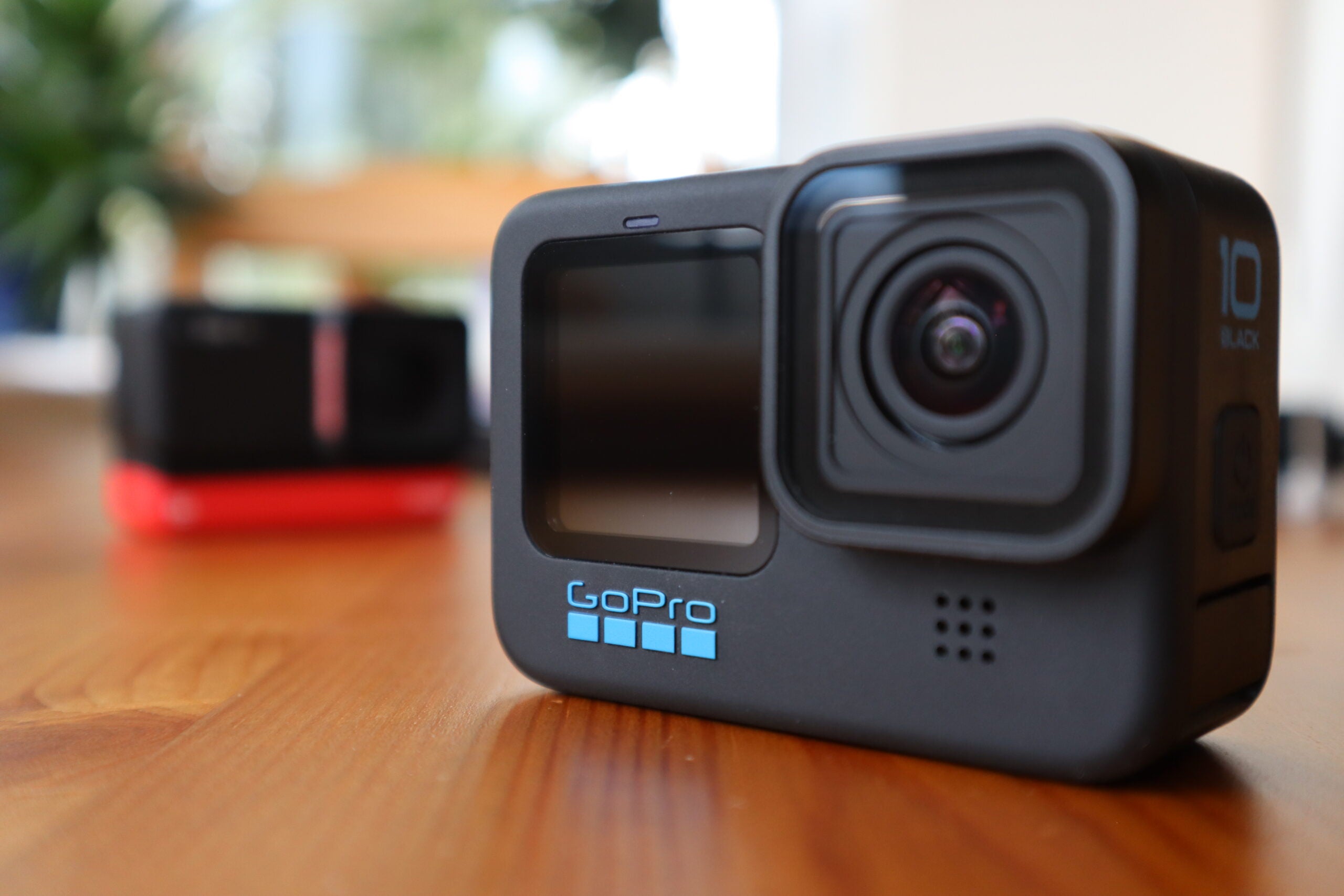
| Specifications | |
| Weight | 4.5 oz |
| Waterproof | 33.0’ / 10.0 m |
| 5K video | Up to 60fps |
| 4K video | Up to 120fps |
| Stills resolution | 27 MP |
| Battery life | 2-3 hrs estimate |
Here are the pros and cons of GoPro Hero11 Black:
Pros
- Outstanding image stabilization
- Simplified interface
- Horizon locking at up to 5.3K
Cons
- The front display is not touch sensitive
- Not a great lowlight video
GoPro Hero11 Black is an excellent camera with upgraded features. The new square sensor is extremely versatile and it has the best in-class stabilization. The camera has the ability to shoot in 5.3K resolution, 8:7 video at up to 30fps and footage can be losslessly cropped to form a new 4K portrait from a single video. It is a triumph on all fronts.
10. Nikon Z9
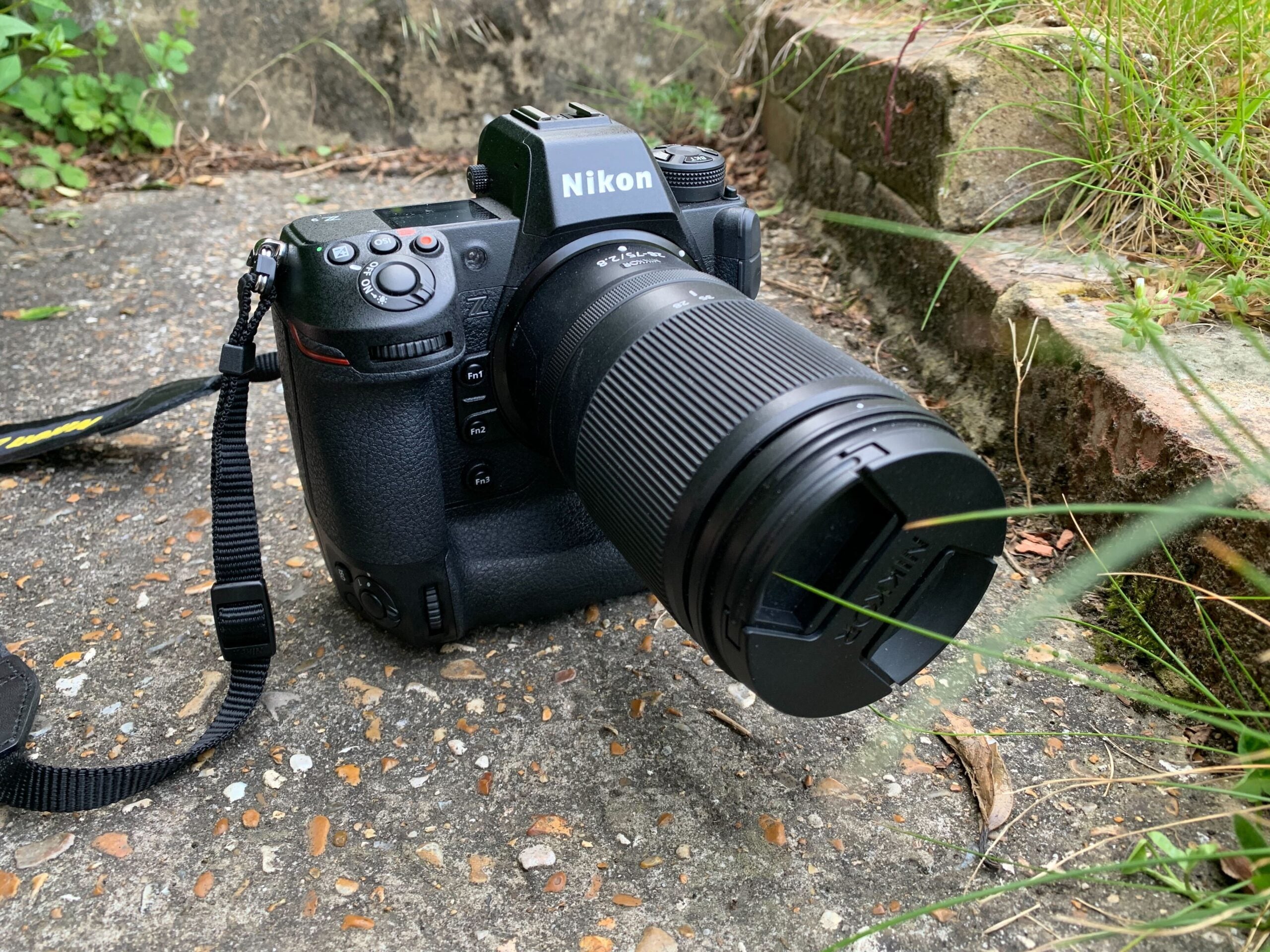
| Specifications | |
| Sensor size | Full-frame |
| Resolution | 47.5MP |
| Viewfinder | 3.69m-dot OLED EVF |
| Monitor | 3-inch bi-directional touchscreen |
| Autofocus | 493 hybrid phase |
| Movies | 8K/60p |
| Maximum continuous shooting rate | 20fps |
| User level | Expert |
Here are the pros and cons of the Nikon Z9:
Pros
- Powerful stacked 45.7MP sensor
- Outstanding battery life
- Reliable tracking AF
Cons
- Bulkier than competitors
- Some features require a firmware update
Nikon Z9 is a mirrorless monster for wildlife and sports photographers. Its two-way tilting touchscreen is perfect for multi-angle shooting. Filmmakers can enjoy a candy store of abilities with this camera. The image quality is superlative with extensive cropping potential, supported by superb image stabilization.
Final Word
To be successful in photography requires a great investment! It should start with a camera that is right for you. Take your time, do some research and read reviews on whatever camera fit your style and price range. From there you can advance to the next step and learn about lenses. Whatever camera you choose, just remember to make it work for you; it is your creative outlet so make the most of it!
Given the thousands of digital cameras on the market today, we thought it would be useful to come up with a list of the top 10 cameras for professional photographers. If you’re looking for a new camera and your budget can handle it, we hope our list will help you find the right model for your needs.
With the information we’ve provided here, you should be able to find something that works for your needs and budget. Good luck!

Leave feedback about this